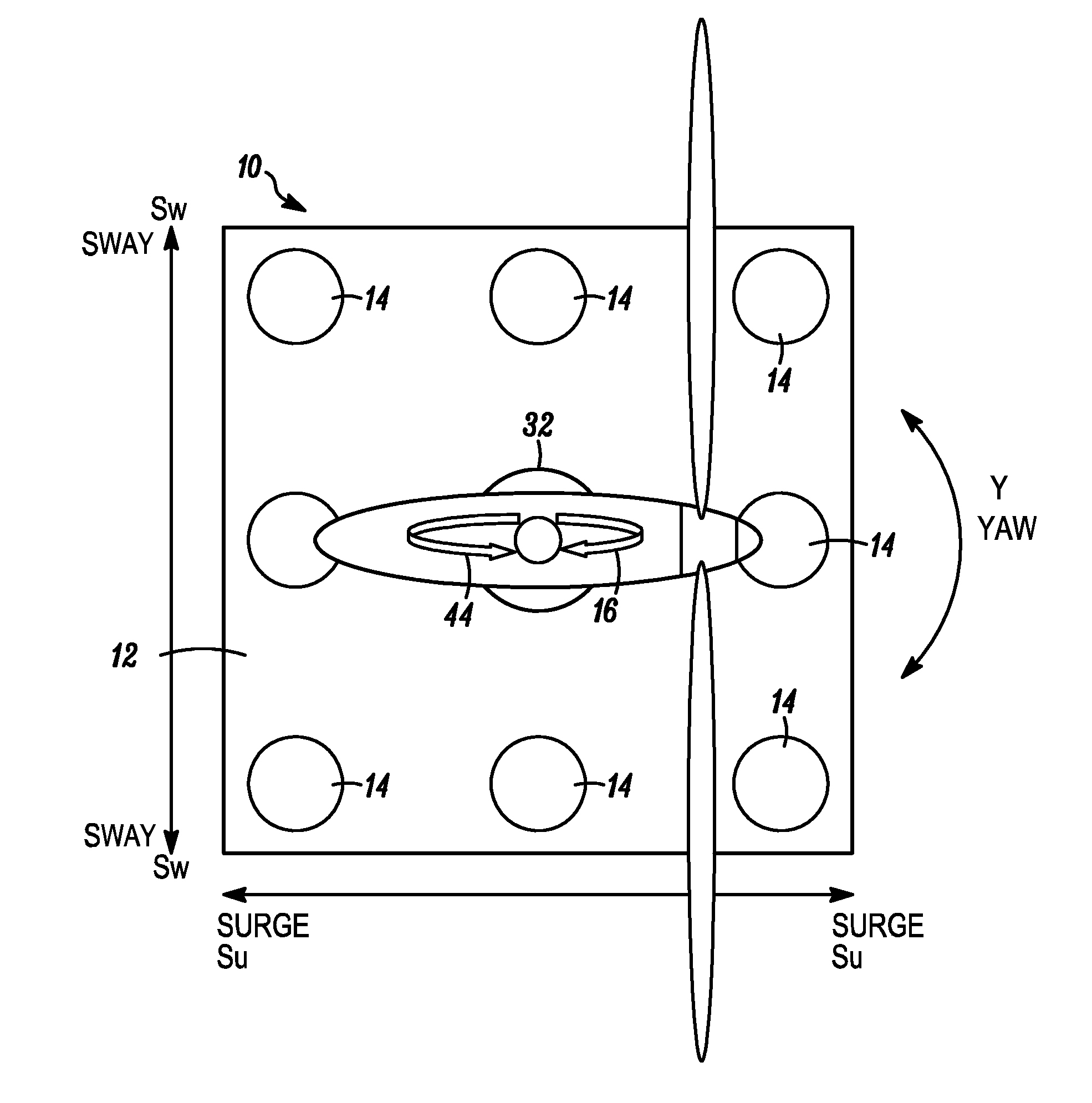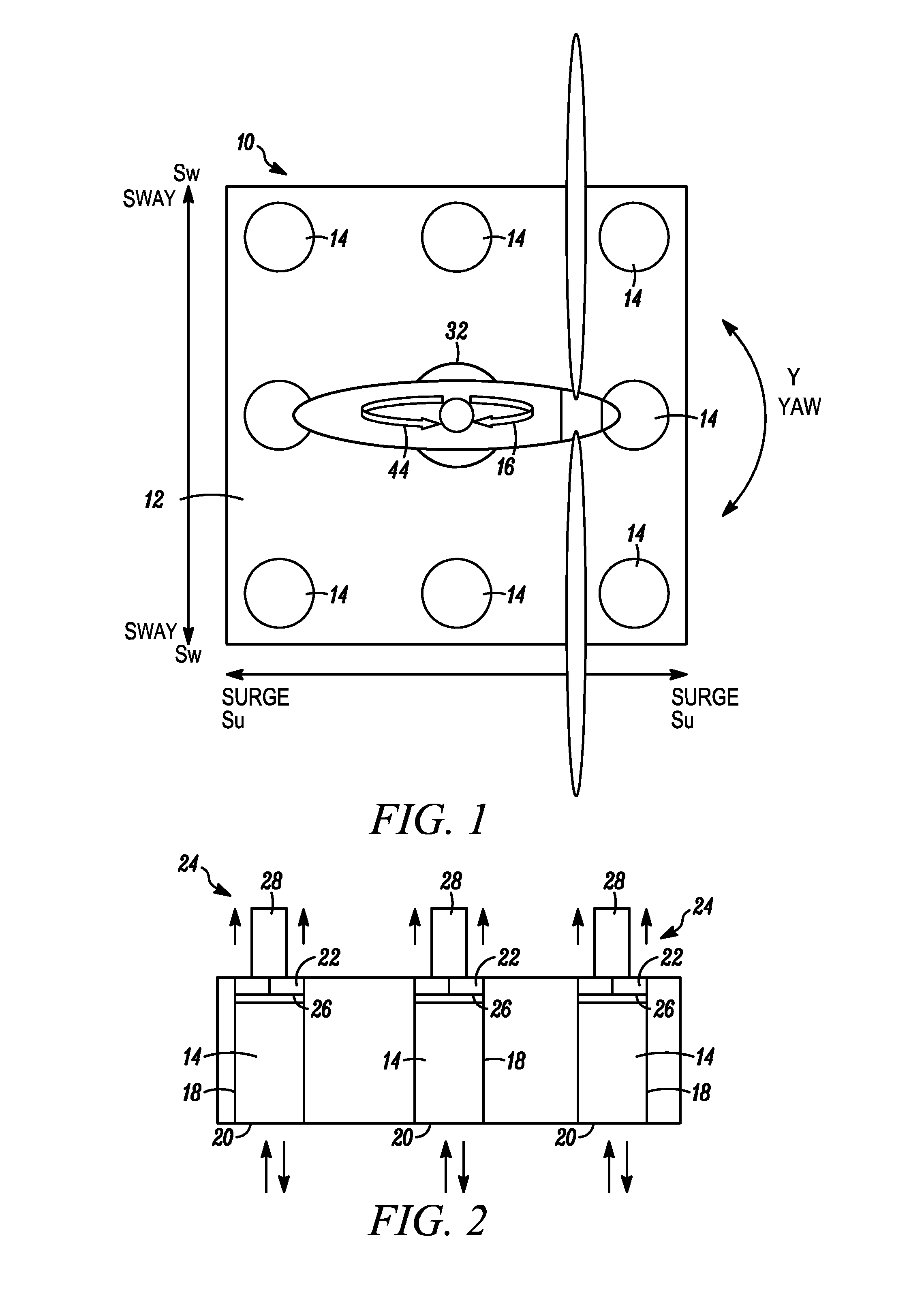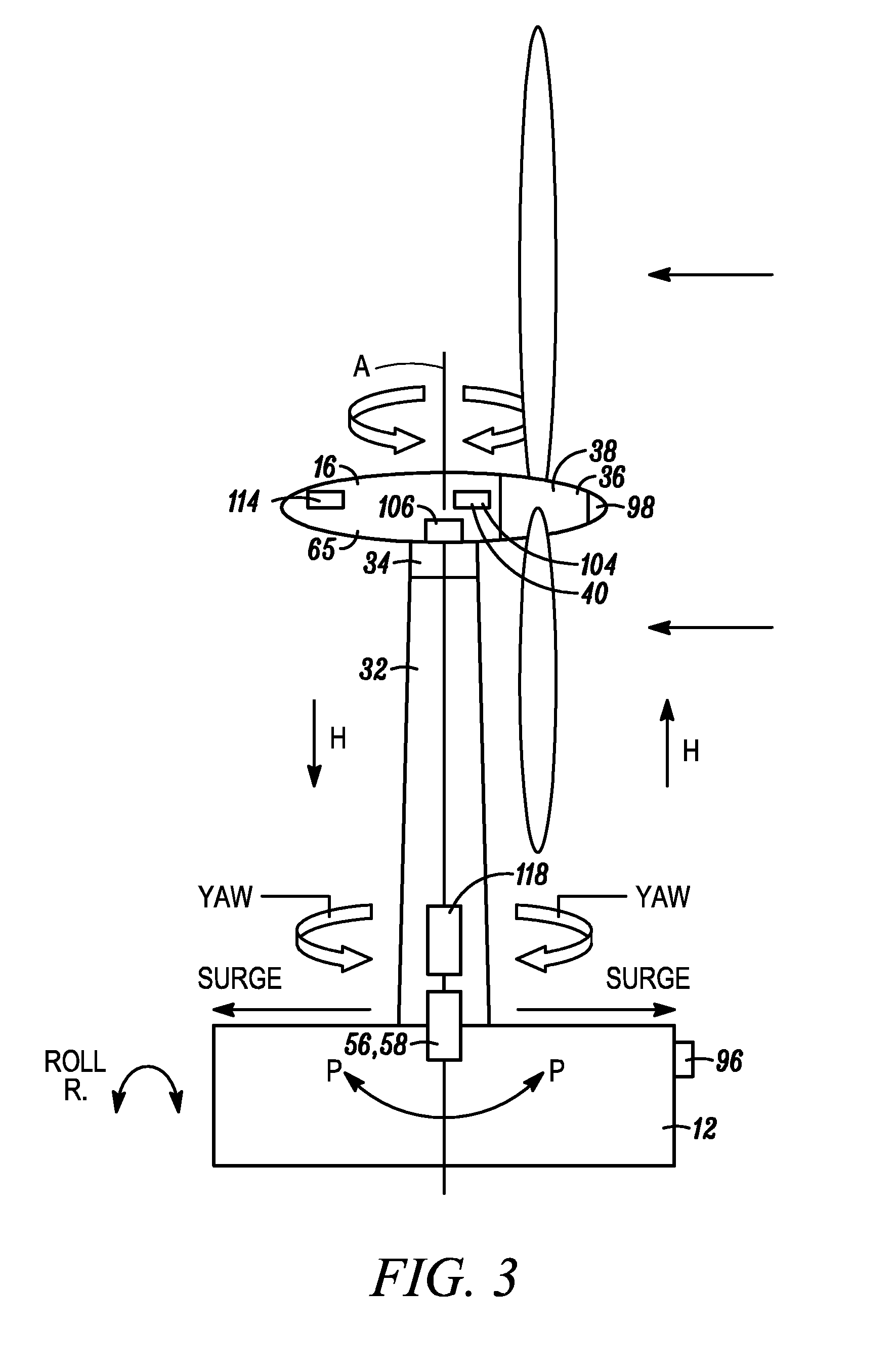Wave and wind power generation
a technology of wind power generation and wave power, which is applied in the direction of floating buildings, vessel safety, and vessel movement reduction by mass displacement, can solve the problems of small lift component, inability to produce positive torque, and limited conditions over which a fixed blade wells turbine operates with reasonable efficiency, etc., to achieve the effect of reducing disadvantages and increasing power generation efficiency
- Summary
- Abstract
- Description
- Claims
- Application Information
AI Technical Summary
Benefits of technology
Problems solved by technology
Method used
Image
Examples
Embodiment Construction
[0042]Referring now to the drawings in general but particularly to FIG. 1, it will be appreciated that a platform 10 according to the present invention comprises a base 12 within which may be provided a plurality of oscillating water columns (OWC's) shown diagrammatically at 14 and upon which may be provided a wind turbine shown generally at 16 and being rotatable about axis A. In various arrangements one or more or both of the OWC's and wind turbine may be provided. When floating on water and exposed to the motion of the waves and other influences the platform can move about three axis in one or more of six ways (pitch, roll, yaw, sway, surge and heave), all of which are discussed in detail later herein but each of which are marked with appropriate arrows (P, R, Y, Sw, Su and H) throughout the drawings. The OWC's may be provided in the singular, matched pairs at opposite extremities of the platform or in multiples thereof positioned at appropriate positions within the platform depe...
PUM
 Login to View More
Login to View More Abstract
Description
Claims
Application Information
 Login to View More
Login to View More - R&D
- Intellectual Property
- Life Sciences
- Materials
- Tech Scout
- Unparalleled Data Quality
- Higher Quality Content
- 60% Fewer Hallucinations
Browse by: Latest US Patents, China's latest patents, Technical Efficacy Thesaurus, Application Domain, Technology Topic, Popular Technical Reports.
© 2025 PatSnap. All rights reserved.Legal|Privacy policy|Modern Slavery Act Transparency Statement|Sitemap|About US| Contact US: help@patsnap.com



